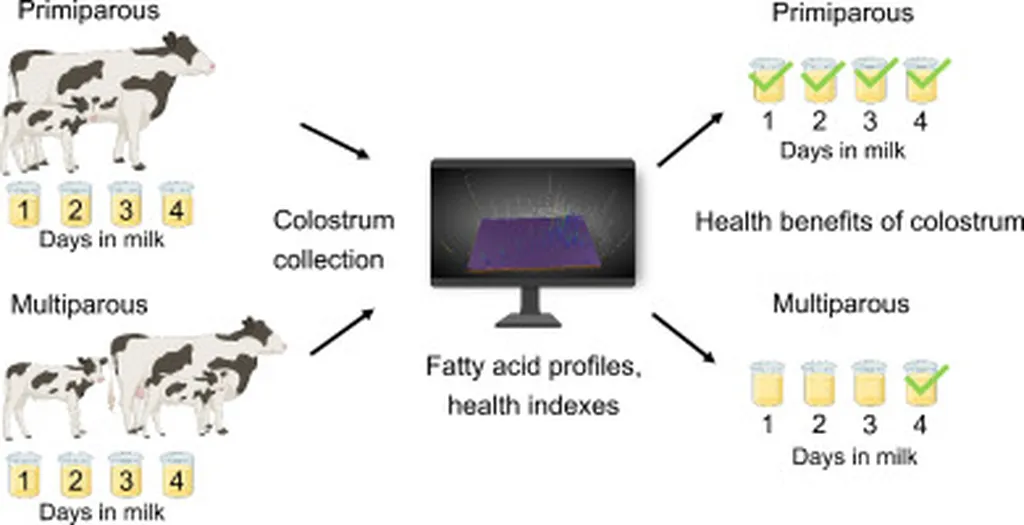In the rolling hills of Cisarua, Bogor, a quiet revolution is taking place in the world of dairy farming. Researchers from the Livestock Technology and Management department at IPB University’s Vocational School have been delving into the nuances of milk production and quality among Peranakan Friesian Holstein (PFH) cows, with findings that could reshape the way we view and utilize dairy products. The study, led by Luluk Lifa Selviana, offers a glimpse into the intricate world of lactation and its impact on milk’s nutritional profile.
The research, published in the *Jurnal Ternak Tropika* (Tropical Livestock Journal), focused on evaluating milk production at different lactation stages and the nutrient content across various types of milk. The team meticulously recorded milk production in the morning and evening from the first day of lactation up to 13 weeks. They also conducted nutritional quality tests using a milk analyzer, examining variables such as total solids (TS), density, fat, solids-not-fat (SNF), lactose, and protein.
One of the most compelling findings was that the stage of lactation did not significantly affect milk production (P>0.05) between the second and third lactations. However, the nutritional quality of the milk showed significant variations (P<0.05) across different types. For instance, colostrum—the first milk produced after calving—had a density of 1.05%, total solids of 22.75%, and protein content of 6.63%, which were markedly higher than those in transitional and full milk."Colostrum is a powerhouse of nutrients, and our findings underscore its superior quality compared to other types of milk," said Selviana. "This could have significant implications for the dairy industry, particularly in the production of high-value nutritional supplements."The study also revealed that the fat content did not differ significantly (P>0.05) across colostrum, transitional milk, and full milk, with values of 4.37%, 3.67%, and 3.34% respectively. This consistency in fat content could be a boon for dairy processors, ensuring a stable input for products like butter and cheese.
The implications of this research extend beyond the farm gates. For the dairy industry, understanding the nutritional variations in milk at different lactation stages can lead to more targeted and efficient processing methods. This could result in higher-quality dairy products and potentially open new markets for specialized milk products.
Moreover, the findings could influence breeding programs and farm management practices. By optimizing lactation stages and milk types, farmers could enhance the overall productivity and profitability of their herds. “This research provides a solid foundation for further studies and practical applications in the dairy sector,” Selviana added.
As the world continues to demand high-quality, nutrient-rich dairy products, studies like this one are crucial. They not only deepen our understanding of milk production but also pave the way for innovations that can meet the evolving needs of consumers and the industry alike. With the insights gained from this research, the future of dairy farming looks promising, and the humble cow continues to be a cornerstone of agricultural innovation.

